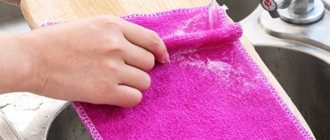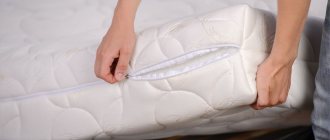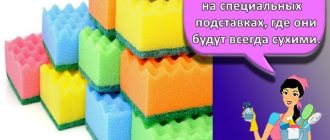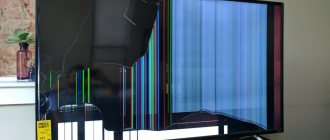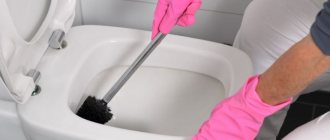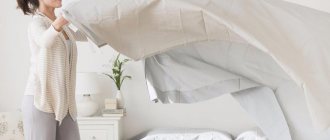Scientists at the University of Manchester, England, once estimated that a typical toothbrush can contain more than 100 million bacteria , including bacteria such as E. coli (which causes diarrhea) and staph (which causes skin infections). But this is not a disaster, because hundreds of microorganisms constantly live in our oral cavity, and the body’s natural defenses protect us from them every second without harm to health.
And yet, health problems begin when the balance of bacteria in the oral cavity is imbalanced. Therefore, ignoring the rules for using and caring for a toothbrush (which is simply teeming with microbes under a microscope) is very unwise for the sole reason that you have a strong immune system.
Take a look at this photo of a toothbrush bristle under a microscope, maybe in this case you will want to be more meticulous in caring for your toothbrush?
Tooth bristles and microbes under a microscope
Tips for storing your toothbrush
- Rinse your toothbrush with running tap water before and after use;
- Do not put your toothbrush in a case or box unless it is dry;
- Store the toothbrush only in a vertical position (in the box holder, glass);
- Do not keep different toothbrushes in the same glass;
The toothbrush loves gentle care
When does a brush become dangerous?
American scientists have found that on average, about 100 million microorganisms live on a toothbrush that is stored open. Among them are staphylococcus and other bacteria that can lead to infectious diseases.
After brushing their teeth, the average user simply rinses the brush with tap water. But such cleaning is not effective. At best, water only washes away food debris and surface contaminants, but is powerless against microbes. If your toothbrush is left untreated, bacteria will accumulate on it, increasing the risk of tooth decay, canker sores, bad breath and other dental problems.
How to disinfect?
To prevent your toothbrush from being a breeding ground for germs, it needs to be disinfected. This can be done in several ways.
- Boil.
This method is suitable for treating manual toothbrushes; electric brush heads should not be exposed to this effect. The brush is placed in a container of hot water for about 10-15 minutes, after which it is thoroughly dried. Boiling will destroy most pathogenic microorganisms, but the bristles will wear out faster.
- Treat with rinse aid.
If you use an antibacterial mouthwash, this product can be used to disinfect your brush. After rinsing with water, it is placed in the solution and left for a few minutes.
- Treat with disinfectant.
You can clean your toothbrush from germs using special disinfectants. The method of application is similar to cleaning with rinse aid.
- Sterilize under UV lamp.
There are special ultraviolet sterilizers that effectively fight germs in bristles. To clean a toothbrush of bacteria, it is placed in such a device for 10 minutes, after which it is safe for the user and ready for use.
- Soak in medical alcohol.
Alcohol destroys germs well and can be easily purchased at any pharmacy. If you do not have special disinfectants, simply place the brush in medical alcohol for a few minutes. Similarly, chlorhexidine or another antiseptic can be used to disinfect bristles.
Note that most disinfection methods are applicable to manual brushes. How to care for an electric one should be read in the instructions for the specific model so as not to damage the device.
How to properly brush children's teeth?
A child can be introduced to an electric toothbrush from the age of 3 years. But up to 7, you should guide the brush and not let go of it while brushing. During this period, it is important to teach the child to spit the toothpaste and rinse his mouth.
The technique of brushing teeth in adults and children is no different - the only difference is that parents help children brush their teeth. Sit in a way that is comfortable for both of you: sit the child on your lap or stand behind him in front of the mirror. If your brush does not have a built-in two-minute timer, use a special application that will motivate and captivate the child (for example, some applications gradually open a picture of cartoon characters while brushing teeth).
Wash your hands before and after brushing your teeth
Bacteria and viruses are mainly transmitted through the palms - throughout the day they come into contact with many surfaces that are not always sterilely clean.
To stay safe during and after brushing your mouth, you should rinse your hands with soap and water for 20 seconds to remove any particles that might be left on the brush handle. After the procedure, you should also wash your palms to be on the safe side. In an interview with Insider, William Martin, president of the Maryland Dental Association, said that hand rinsing should, in principle, be a basic activity of every person - it will help reduce the risk of contracting viruses and infections, as well as minimize contamination of surfaces that a person touches.
What happens if you don't do this?
If you do not disinfect on time, you can complicate your life. After all, the human oral cavity is inhabited by a variety of microbes.
Note! While everyone knows that it is necessary to brush your teeth every day and rinse your mouth with a special solution, many people do not think about the fact that they take care of their hygiene items.
In order to prevent the spread of harmful bacteria, disinfection measures must be taken.
If this is not done,
bacteria will multiply and the likelihood of various diseases will increase.
Home cleansing
Removing plaque from teeth in the dentist's office is an expensive operation, so many people prefer to get rid of unsightly stains on the enamel themselves. Before choosing one method or another, we recommend visiting a doctor.
If the gums are bleeding or have carious changes, such procedures cannot be performed.
Professional products
Cosmetic whitening strips help clear plaque within 30 days. The drug is sold at the pharmacy and applied to the enamel for half an hour daily. Regular procedures can brighten a smoker's smile by two shades. The effect lasts for two months, and then you need to repeat the course again. The disadvantage of the product is the increase in sensitivity and the inability to remove the dark coating in the interdental spaces.
A special gel and trays are a whitening procedure that is carried out both at the dentist and at home. It is enough to purchase a dental cleaning product based on carbamide peroxide and plastic dental structures. Close contact with the surface protects the mucous membranes from penetration of the substance. The first results are visible after two weeks. The drug increases sensitivity to hot and cold foods.
How I found my ideal hair growth product
Hello dear! I want to share with you my solution to the sensitive problem of hair loss . The problems are very serious, at least for me. I would never have thought that this misfortune would touch me, especially at the age of 29 (read more...)
“Professional toothpastes can also be used to remove nicotine plaque. They contain abrasive particles, which effectively clean the tooth surface.”
Pencil is a less aggressive way to remove stains on teeth. Inside the device there is a special gel that must be applied to the enamel with a brush. This product does not need to be removed, as it will quickly be washed away by saliva. The active substance and convenient design allow you to penetrate even the most inaccessible crevices.
Folk recipes
Home whitening is the mechanical removal of tobacco plaque on teeth. Most often, substances with fine abrasiveness are used for this. Soda or salt is poured onto the usual paste and gently wiped over the surface of the enamel. For convenience, use a sponge or a finger wrapped in gauze. To avoid injury, this method is prohibited more than once a week.
Citrus juice is an excellent natural bleach that will help cope with small plaque and cure incipient inflammatory processes in the gums. Use a slice of fruit to thoroughly wipe the teeth and the crevices between them. If you add a couple of drops of liquid to the paste, the quality of oral care will improve.
Professional methods
Going to the dentist is important if you have old nicotine plaque that you cannot remove on your own. There are several professional options for removing nicotine deposits:
- Ultrasonic cleaning . A painless and effective procedure that helps to cope even with tartar. It is carried out with an ultrasonic device, which, using waves, acts on deposits both on the enamel and in the area under the gum that is difficult to reach for most other types of cleaning. Mineralized plaque and tartar are crushed into small pieces under the influence of ultrasound and then washed off. The duration of the procedure depends on the amount of deposits and the degree of their mineralization. On average, an ultrasonic cleaning session takes 30 to 40 minutes;
- Chemical cleaning involves the use of rather aggressive compounds to remove deposits. This method is used in cases where ultrasound exposure has proven to be ineffective. Can damage the integrity of weak enamel and make teeth sensitive;
- Laser cleaning. This procedure is very effective, but is expensive. Prices for laser cleaning start at 3,000 rubles per session, and several will be required. Using this method, you can not only remove plaque and tartar, but also relieve inflammation of the gums and mucous membranes, which is especially important for smokers. In addition, after this procedure, the teeth will become several shades lighter without damaging the enamel;
- The Air Flow procedure cleans, polishes and brightens enamel up to two shades, and removes stains. Its essence is to treat the tooth surface with a fine mixture consisting of water, air and baking soda. It is supplied under pressure through a sandblasting machine and is capable of cleaning even the most inaccessible places between the teeth and in the cervical area. The cleansing mixture does not damage the enamel and is completely safe for health. This hygiene procedure takes about an hour.
The Air Flow procedure also helps clean dentures and veneers, and is even suitable for crowns. It does not damage the gums because only hard tissues are affected.
You should resort to professional removal of nicotine plaque at least 2 times a year. To achieve optimal results, the dentist may recommend several types of cleaning, that is, a combined method.
Rating of the best toothpastes for removing plaque and tartar
It is important to brush your teeth at least twice a day
- morning and evening, before bed
. Some dentists advise brushing your teeth after every meal (without using toothpaste) or at least rinsing your mouth with water to prevent food debris from getting stuck in your teeth.
Expert opinion
Ekaterina Korneva, expert in the field of care, cleanliness and beauty
I will help you understand all the intricacies.
And in general, it is very important to eat a balanced diet and avoid diets to keep your teeth strong and healthy. The deposits on the teeth have a yellow tint and, as the number of cigarettes smoked increases, they darken and turn brown. How to properly clean your tongue from plaque, why cleaning is needed and what means exist for this. If you have any questions, please contact me, I will be happy to answer!
Electric brush care
In general, you need to care for an electric toothbrush in the same way as a regular one. The processing rules are not too different. The pocket with batteries and microcircuit is reliably protected from moisture, so the device can be washed without fear.
However, there are several important nuances that need to be taken into account when caring for an electric brush:
- The bristle head wears out within 3 months and must be replaced.
- Discharged batteries should never be left in the device. They may start to leak. Then not only will the brush be damaged, but the acid may get into your mouth and cause poisoning.
- After use, the electric brush should be rinsed with warm water and dried.
When trying to disinfect the device, it is important not to overdo it. Boiling may cause the product to melt. According to GOST, an indicator of 1000 CFU/cm3 of microorganisms on bristles is the norm and, in the absence of diseases of the immune system, cannot lead to infection.
Every day, billions of bacteria come into contact with your toothbrush from your mouth. Among them are streptococci, staphylococci, E. coli, porphyromonas gingivalis, herpes and hepatitis viruses A, B, C, candida albicans, coliform and many others. Improper care can lead to frequent illnesses. It is important to thoroughly wash and dry the bristles, choose a suitable place to store brushes, and observe personal hygiene rules. Every 3 months the device must be replaced.
Lemon
- Decreased immunity.
- Dental diseases (gingivitis, stomatitis, caries, periodontitis, etc.).
- Infectious diseases.
- Gastrointestinal problems.
- Infection of the body with helminths.
- Pathologies of the heart, lungs, thyroid gland.
- Taking medications, etc.
The formation of nicotine and other deposits on teeth is easier to prevent than to remove. The following tips will help with this:
Folk remedies Recipes for masks At home Hair loss in women How to stimulate growth Causes of hair loss Hair loss in men Review of vitamins Helpful tips
How to know if you have tartar
Look in the mirror, paying attention to the condition of your teeth from the inside. The fact that at first glance the enamel seems clean and quite light is not yet an indicator. Calculus is a cloudy white, yellowish or almost black deposit between the teeth or at the bottom of the gums.
It would be good if these unpleasant formations caused only aesthetic displeasure. Their presence threatens the formation of gum pockets, where the remnants of eaten food will accumulate, exposing the base and, as a result, diseases of soft and hard tissues.
Drink juices and sodas through a straw
Change your toothbrush as soon as the bristles begin to wear out or become curled.
. In this condition, the brush will not be able to perform its main function, and brushing your teeth will be useless and sometimes harmful to the gums.
Expert opinion
Ekaterina Korneva, expert in the field of care, cleanliness and beauty
I will help you understand all the intricacies.
It is an improved copy of the 5460 brush, but for your children who strive to be adults and like you. In folk recipes that can clean teeth from tobacco plaque, there are components such as soda, hydrogen peroxide and fruit vinegar. Additionally, please contact me with any questions, I will be happy to answer!

